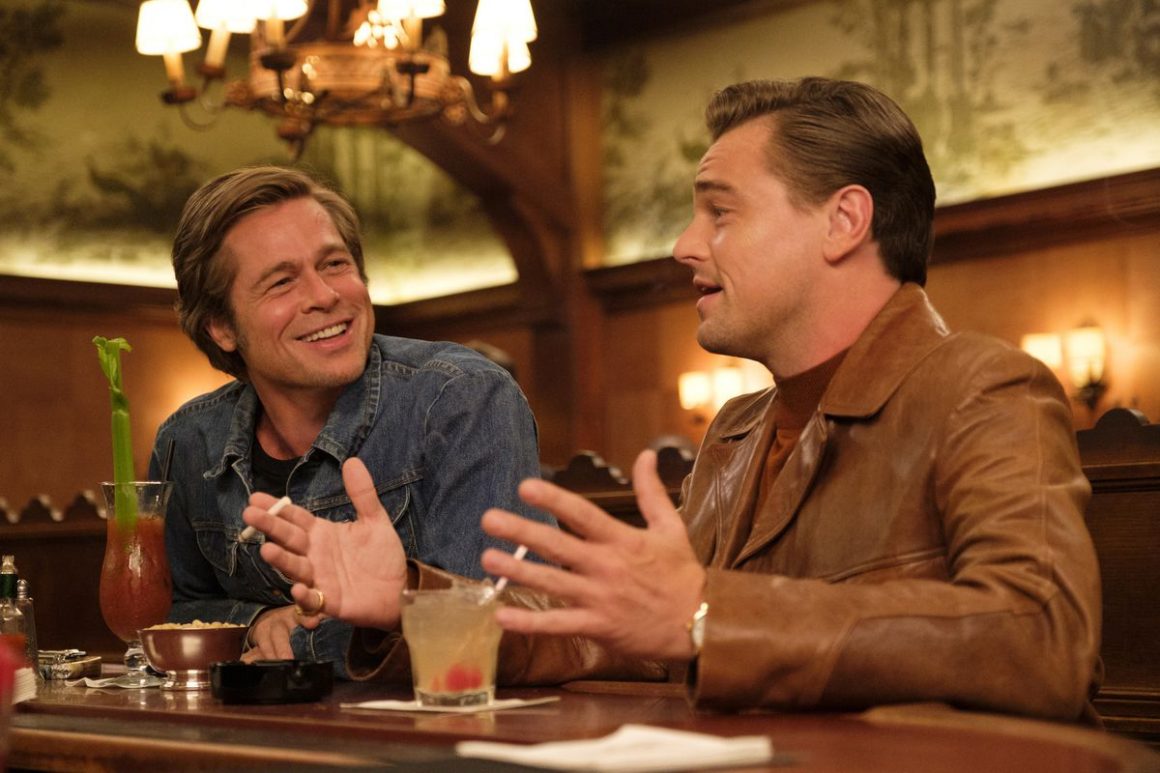
Review: Once Upon A Time in Hollywood gives the Manson murders the Tarantino treatment
By Troy Hasselman, August 1 2019 —
Warning: This review contains plot spoilers for Once Upon a Time in Hollywood
At this point you know what you’re getting with a Quentin Tarantino movie. Big-name stars, snappy dialogue, explosive scenes of violence, gratuitous closeups of feet and a host of references to American pop-culture. Once Upon a Time in Hollywood includes all of these trademarks of Tarantino’s work amidst the historical backdrop of late-sixties Hollywood in the shadow of the grisly murders committed by the Manson family.
While the film uses the Mason murders as a backdrop, it centers on fading Hollywood star Rick Dalton (Leonardo Dicaprio) and his stunt-double and best friend Cliff Booth (Brad Pitt). Dalton is the former star of a hit western television show that has since been reduced to playing bit parts in B-list TV shows after a failed movie career and despairs at the tumble his career has taken. Booth acts as Dalton’s assistant and driver after his work as Dalton’s stunt-double has dried up and seems ambivalent towards his lack of work. The film also follows around Sharon Tate (Margot Robbie), Hollywood it-girl and Dalton’s neighbour in Beverly Hills who has a burgeoning career that contrasts heavily with Dalton’s.
The movie takes a vignette-style approach, typical of Tarantino, for it’s first two-thirds as it follows the perspective of its three main characters through a few days in February, 1969. The characters have run-ins with members of the Manson family, film movies, attend movies and go about their day-to-day life in Hollywood. These scenes are made interesting by the biting and often funny dialogue — this is easily the funniest movie of Tarantino’s career — and the underlying tension of these scenes with the shadow of the very real and very tragic fate that befell Sharon Tate and several of her friends at the hands of the Manson family in August, 1969.
Dalton and Booth both act as prototypical Tarantino anti-heroes with Dalton playing the arrogant, narcissistic, ill-tempered stereotype of a Hollywood star while Booth is a cold, nonetheless charming, psychopath with a heavy violent streak. The two characters are able to carry the film, in no small help thanks to the mammoth star power of Dicaprio and Pitt, based on this warped charm that the two have by remaining entertaining while simultaneously being highly unlikeable. This is another instance where the shadow of the Manson family helps the movie along narratively as the villain of the movie is firmly established and widely absent throughout as Charles Manson (Damon Herriman) appears only briefly early on in the movie.
Some clear flaws in the movie are the lack of focus on Sharon Tate. The vast majority of the narrative is devoted to Dalton and Booth with the audience not finding out much information about Tate. She has few lines and comes across as likeable, kind and charming during her time on screen but little shown about her beyond that, with her coming off as somewhat of a one-dimensional plot device as opposed to a fully sketched-out character. This is a huge missed opportunity from this film to humanize Sharon Tate beyond her infamous death. As well, the long closeup shots of feet remain as weird and egregious here as they do in any other Tarantino film.
That being said, Once Upon a Time in Hollywood is still the most fun I’ve had at a movie this year. The alternate-timeline construct used here has become another key point in Tarantino’s filmmaking in recent years and is used highly effectively here as a vehicle for telling a revenge story, which is what all of his movies ultimately are. Glaring flaws and all, Once Upon a Time in Hollywood is undeniably an enjoyable and loving portrait of a bygone era.
